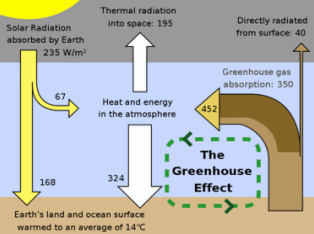By Kim Smiley
The very existence of climate change continues to be controversial, but some cities have already decided to start preparing for a hotter future. While the rest of the world continues to debate whether man’s impact on the world is producing climate change, the city of Chicago is already taking action to prepare for a warmer climate.
The effort to adapt Chicago to the predicted climate of the future began in 2006 under the then mayor Richard M. Daley. The first step in the process was a model that was created by scientists specializing in climate change to predict how global warming would affect Chicago. The output of the model shocked city planners. Experts predicted that summers in Chicago would be like current summers in the Deep South, with as many as 72 days over 90 degrees by the end of the century. A private risk assessment firm was tasked to determine how the predicted climate shift would impact the city. The dire predictions included an invasion of termites, heat-related deaths reaching 1,200 a year and billions of dollars’ worth of deterioration to building and infrastructure in the city. Chicago decided the time to take action was now.

Armed with the predictions, city planners began to plan how best to adapt Chicago for the warmer future. There are a number of ways that Chicagoans are already changing how they maintain the city. Much attention has been given to the paved spaces in the city to improve drainage to accommodate higher levels of predicted rain. 13,000 concrete alleys in Chicago were originally built without drainage and city planners are working to change this. 150 alleys have already been remade with permeable pavers that allow 80 percent of rainwater to filter to the ground below. City planners are also changing the mix of trees that are planted to make sure they are selecting varieties that can withstand hotter temperatures. Air conditioning is also being planned for Chicago’s public schools, which have been heated but not air conditioned until now.
Time will tell whether the steps Chicago is taking will prove necessary, but the Chicago’s adaption strategy is an interesting case study in a nation still debating the existence of global warming.
When trying to select the best solutions to a problem such as in this case, the Cause Mapping method of root cause analysis can be an effective way to organize all the information. A Cause Map detailing the many causes of a problem may make it easier to select the most cost effective and efficient means of preventing a problem. A Cause Map can also be adapted to fit the scope of the problem. In this example, a Cause Map could be built to detail the issue of preparing Chicago for a warmer future or a bigger Cause Map could be built to tackle the problem of global warmer on a larger scale.
To read more about the Chicago Climate Action Plan, please visit their website.
